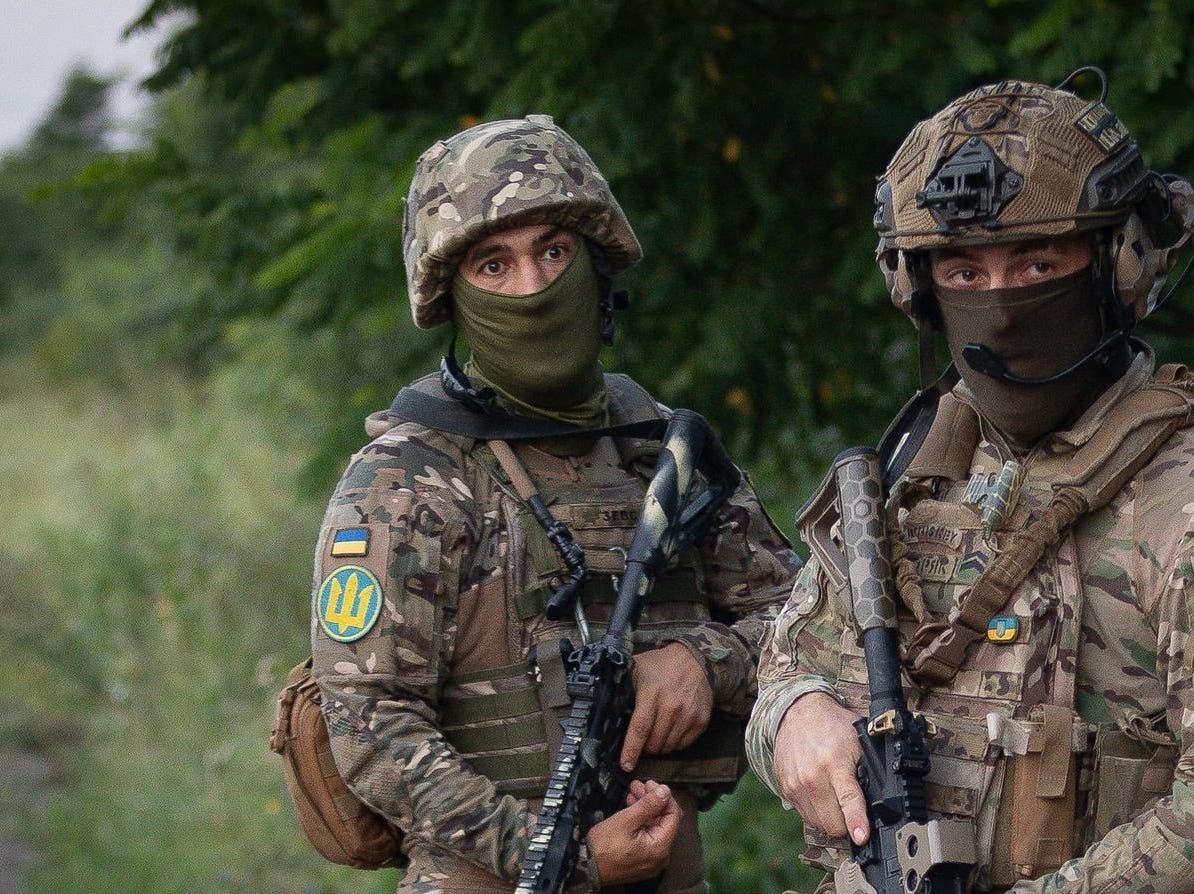Pretty much the entire Ukrainian marine corps has deployed to a 10-mile-long stretch of the front line in southern Ukraine’s Donetsk Oblast.
That’s 8,000 or so marines in four brigades. A powerful force whose presence along the Mokri Yaly River Valley could be the decisive factor should the Ukrainians achieve a major breakthrough along that axis.
But the simultaneous deployment of all of the elite marine brigades, two months into Ukraine’s long-anticipated southern counteroffensive, comes with significant risk.
The marines, along with the separate air-assault forces and a handful of the most experienced and best-equipped army brigades, represent the most potent offensive force in the Ukrainian order of battle. But no brigade can fight forever without taking a break for rest, repairs and the induction of fresh recruits.
So the marines eventually will need to pull back from the line of contact. And when they do, they might leave a gap—one that less effective army units might fill. For the Russians, that swap could be an opportunity: to counterattack and exploit the Ukrainians’ battlefield downgrade.
The Ukrainian marine corps became an independent branch of the armed forces back in May, on the orders of Ukrainian president Volodymyr Zelensky. “They are a powerful force that destroys the enemy, liberates Ukrainian lands and performs the most difficult tasks in the most difficult conditions,” Zelensky said. “And we need more of this force.”
Prior to 2014, the year Russia first invaded Ukraine—first seizing the Crimean Peninsula then attacking eastern Ukraine’s Donbas region—there was just one marine brigade, the 37th, and it belonged to the Ukrainian navy.
New brigades formed as the now nine-year war escalated. The 36th stood up in 2015. The 35th, in 2018. The newest brigade, the 38th, formed this spring—and dramatically announced its arrival on the southern front by shooting down a Russian air force Ka-52 attack helicopter on or just before July 25.
The 2,000-person marine brigades don’t travel in amphibious assault ships the way marines in other countries do: the Ukrainian navy has just one aged landing ship that lately has been hiding out somewhere near the mouth of the Dnipro River.
No, Ukrainian marines fight on land. What makes them marines is their organization, training and ethos.
Marine brigades are lighter than army brigades usually are. Where an army brigade normally has three battalions each with 30 tracked infantry fighting vehicles plus a full battalion of 30 tanks, a marine brigade typically has at least as many wheeled IFVs as tracked ones—or armored trucks in place of the fighting vehicles.
And a marine brigade might have just a single company of 10 tanks, or no tanks at all. The 37th Marine Brigade for instance rides in American-made M-ATV armored trucks and French-made AMX-10RC reconnaissance vehicles. No tanks.
That lightness confers speed. Where the Ukrainian army lately has shifted to slow, infantry-first assaults backed by lots of tracked IFVs and masses of artillery and rocket fire—a method Ukrainian commanders hope will help the army gradually to penetrate Russian minefields and trenchlines without losing an unacceptable number of tanks and IFVs—the marines still fight like, well, marines.
They move fast in thundering columns of trucks supported by a few tanks, shooting on the move to shock the Russians then deploying infantry for the decisive close fighting. That tactic repeatedly has been on display as the 35th and 37th Marine Brigades have advanced south along the Mokri Yaly River, ultimately liberating a chain of settlements including, most recently, Staromaiors’ke.
While the 35th and 37th storm down the river valley, their sister 36th brigade has been fighting 10 miles to the west, near Stepove. The 38th this week engaged Russian ground forces, for the first time, just outside the town of Urozhaine, which abuts Staromaiors’ke to the east.
The marines have been more successful along this axis than the army has been farther to the west. The terrain is a factor, of course.
The army’s sectors, along the Tokmak axis in particular, are wide open, mostly flat and treeless and littered with many thousands of TM-62 anti-tank mines. The terrain in and around the Mokri Yaly River Valley is more complex, less accommodating of vast dense minefields and arguably more forgiving for an attacker.
But that’s not to discount the marines’ speed, discipline and aggression. It’s not for no reason that Kyiv has deployed every one of its marine brigades along the axis. As Ukraine’s counteroffensive grinds into its third month, Kyiv clearly is desperate for a major breakthrough. Ukrainian commanders seem to believe now is the time to invest the entire fighting strength of the new marine corps.
But if the breakthrough doesn’t happen soon, the marines—all of them—might need a break. There isn’t yet a fifth, sixth or seventh marine brigade to swap in for the four brigades currently in the fight.
Read the full article here





